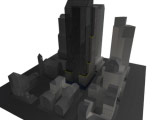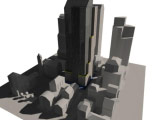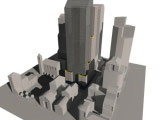Getting to Green: Sustainable Building Design and BIM
Building information Modeling (BIM) adoption plays a significant part in supporting the creation and maintenance of green buildings. [acronym] shows how three examples highlight where BIM can help you design greener buildings today.
For several reasons, not the least of which is global climate change, sustainable building has become a practice of critical interest. ‘Sustainable’ buildings minimize the use of resources such as energy, water, materials and land through optimal design. Green buildings are designed and operated to create healthier and more productive work and living environments through natural light and improved air quality. Sustainable buildings can also reduce long-term operations and maintenance expenses.
Determining a building’s performance with regard to its environmental impact should start with a carbon footprint evaluation. Although these calculations are complex, the latest building information modeling (BIM) design technologies can help the numbers add up. The following three examples highlight where BIM can help you design greener buildings today.
1) Energy Analysis
In the U.S., the draw for power from buildings represents nearly 40 percent of our total energy requirements. The impact of passive thermal heating from the sun, or the converse, shade structures to prevent solar heating, or choosing specific materials for glazing or cladding the exterior face of a building, can help reduce the carbon footprint of a structure. Calculating the difference that any one of these changes make to a project can take days without a pre-generated BIM model and/or reworking existing information into a format acceptable to specialized analysis software. Using a building information model helps immensely because it connects these complex systems, allowing for more precise analysis and reducing the time it takes to explore design options for better energy use.
2) Lighting Design
Leveraging passive sunlight saves money in electrical bills for building owners and enhances occupant productivity. Identifying how to site a particular building with regard to best use of sunlight was a difficult task in the past because the angle of the sun is constantly changing relative to the building. Using expensive physical models could not produce the precise results necessary to make informed design decisions. With a building information model, designers can now use analysis packages to assess the effectiveness of different building configurations on a specific site – determining the benefits of different configurations, for example, moving a window, adding a skylight or changing the orientation of the building itself. They can even simulate the impacts of shadows and sunlight from adjacent buildings in urban settings.
3) Wind Analysis
Historically, the impact of wind on structures has been notoriously challenging and time consuming to assess. Today, analysis software can work directly with the building information model to make predictions about airflow and heat transfer processes in and around building spaces. Design changes can be explored to adjust the impact that wind has on envelope cooling. Similarly, pedestrian studies can show how to reduce wind-tunneling effects for their comfort and safety.
Today’s new performance modeling technologies allow designers to make more informed decisions about the impact of material choices and site use very early on in the building process. Some building performance analysis packages even output related sections for LEED reports so that project members can more easily work to a particular standard. As we all attempt to do our part to reduce greenhouse gas emission, adopting BIM will play an increasingly important role in supporting the creation and maintenance of green buildings.
The series of images below represent a solar study, created in Revit Architecture. This software from Autodesk, built for building information modeling, shows the potential impact of a new central tower on existing surrounding buildings. The study shows light corridors and shadows cast by the building over the course of a day starting in the early morning and ending in the late afternoon. The shadow that the new tower will cast over existing buildings may increase their heating requirements and thus increase the overall ecological footprint of the new structure.; Figure 1: Figure 2:
Figure 2:
 Figure 3:
Figure 3:
 Figure 4:
Figure 4:
 Beau Turner, Director Business Development, Building Solutions Group, Avatech Solutions
Originally published in [acronym] magazine, Issue 7
Beau Turner, Director Business Development, Building Solutions Group, Avatech Solutions
Originally published in [acronym] magazine, Issue 7
The series of images below represent a solar study, created in Revit Architecture. This software from Autodesk, built for building information modeling, shows the potential impact of a new central tower on existing surrounding buildings. The study shows light corridors and shadows cast by the building over the course of a day starting in the early morning and ending in the late afternoon. The shadow that the new tower will cast over existing buildings may increase their heating requirements and thus increase the overall ecological footprint of the new structure.; Figure 1:
 Figure 2:
Figure 2:
 Figure 3:
Figure 3:
 Figure 4:
Figure 4:
 Beau Turner, Director Business Development, Building Solutions Group, Avatech Solutions
Originally published in [acronym] magazine, Issue 7
Beau Turner, Director Business Development, Building Solutions Group, Avatech Solutions
Originally published in [acronym] magazine, Issue 7















































